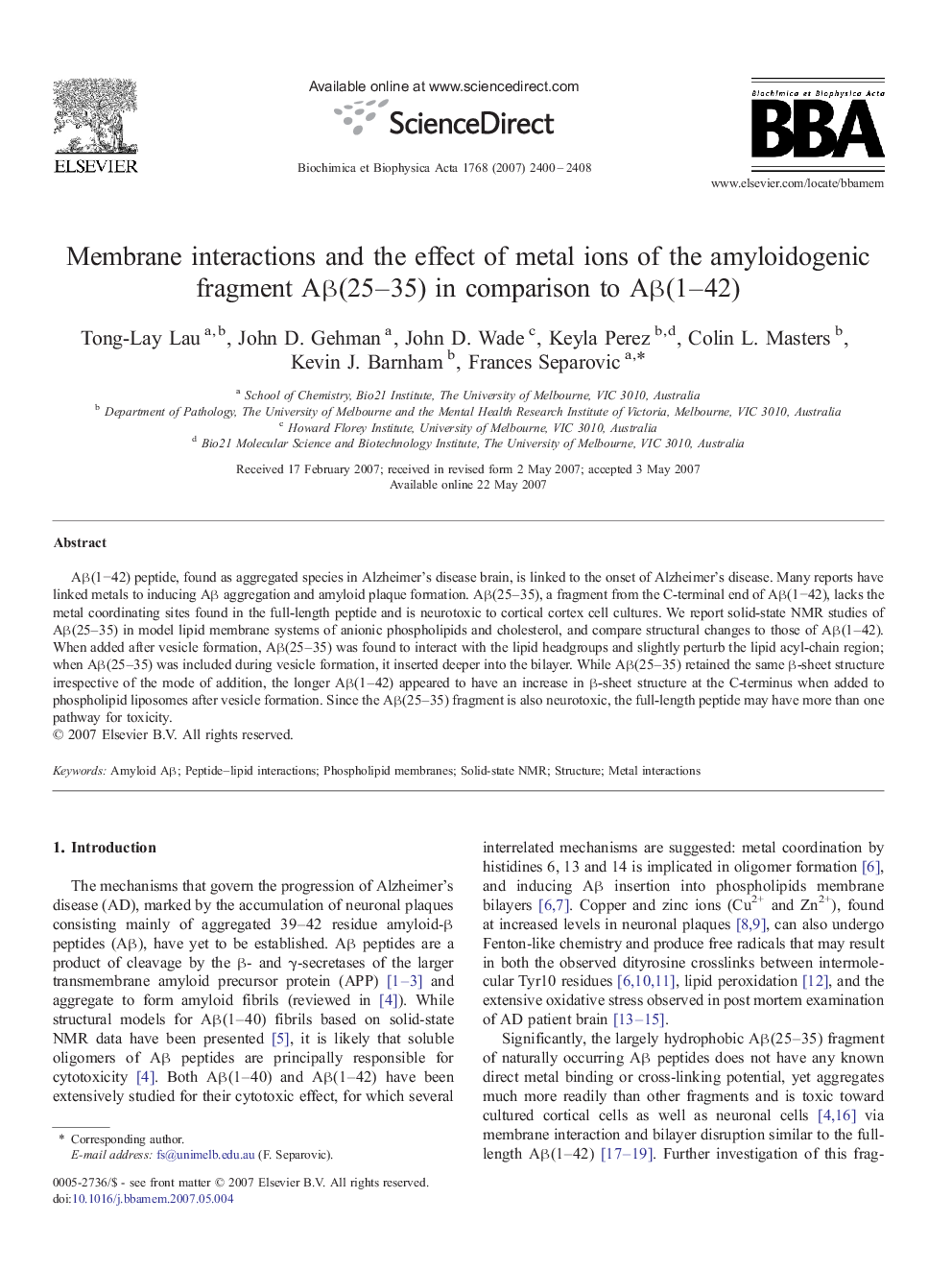| Article ID | Journal | Published Year | Pages | File Type |
|---|---|---|---|---|
| 1945662 | Biochimica et Biophysica Acta (BBA) - Biomembranes | 2007 | 9 Pages |
Aβ(1−42) peptide, found as aggregated species in Alzheimer's disease brain, is linked to the onset of Alzheimer's disease. Many reports have linked metals to inducing Aβ aggregation and amyloid plaque formation. Aβ(25–35), a fragment from the C-terminal end of Aβ(1−42), lacks the metal coordinating sites found in the full-length peptide and is neurotoxic to cortical cortex cell cultures. We report solid-state NMR studies of Aβ(25–35) in model lipid membrane systems of anionic phospholipids and cholesterol, and compare structural changes to those of Aβ(1–42). When added after vesicle formation, Aβ(25–35) was found to interact with the lipid headgroups and slightly perturb the lipid acyl-chain region; when Aβ(25–35) was included during vesicle formation, it inserted deeper into the bilayer. While Aβ(25–35) retained the same β-sheet structure irrespective of the mode of addition, the longer Aβ(1–42) appeared to have an increase in β-sheet structure at the C-terminus when added to phospholipid liposomes after vesicle formation. Since the Aβ(25–35) fragment is also neurotoxic, the full-length peptide may have more than one pathway for toxicity.
